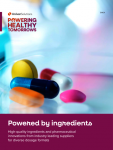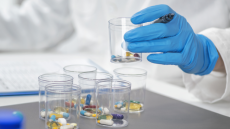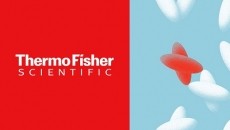CMO Daiso licences chiral synthesis tech from Harvard
has taken out a license to a highly-selective technology used to
synthesise chiral molecules.
The well-established technique, known as Hydrolytic Kinetic Resolution (HKR), was discovered by Dr Eric Jacobsen of Harvard University, who said Daiso's involvement is an opportunity to " develop the full potential " of the HKR process.
Under the terms of the field-limited, co-exclusive agreement, Harvard University will license the patented HKR technology to Daiso for use in the synthesis of chiral epoxides and diol compounds.
The licence applies only to the new oligomer (salen) catalysts developed for the HKR process.
Daiso, whose wide range of chemical-related activities includes contract manufacturing of bulk pharmaceuticals and intermediates based on chiral technology, will synthesise and sell the resulting chiral compounds to its customers, which in turn will use them to make finished chiral pharmaceuticals.
First publicised in 1997, and subsequently scaled up and commercialised under licence by Rhodia ChiRex (now Rhodia Pharma Solutions), Hydrolytic Kinetic Resolution is an industrial manufacturing process for synthesising chiral molecules as intermediates for chiral pharmaceuticals.
The OTD describes it as a " powerful and practical means " of accessing highly enantiomerically enriched terminal epoxides and their corresponding diols.
The technology uses an optically pure Co(salen) catalyst to achieve the selective reaction of one enantiomer of a racemic mixture of terminal epoxides.
This generates a chiral diol, which is then easily separated from the unreacted epoxide.
The separation or resolution of the two mirror-image structures results in markedly different physical characteristics, such as solubility or boiling point.
In drug terms, only one of these structures is likely to exhibit the desired pharmacological activity.
Some 60-70 per cent of small molecules are believed to be the product of chirality and regulatory agencies such as the US Food and Drug Administration (FDA) now insist on a single-isomer version of a molecule if it comes in chiral form.
HKR has been widely patented and is used on an industrial scale to produce epichlorohydrin and other intermediates.
According to Rhodia, the method is " unusual in its generality and selectivity ", routinely generating epoxides with enantiomeric excesses of more than 99 per cent (i.e., a 99.5 to 0.5 mixture of desired and undesired enantiomers) and diols with excesses of 97-99 per cent.
Relying on its own technology, Daiso was one of the first companies in the world successfully to produce optically active epichlorohydrin in commercial quantities, the OTD noted.
The Japanese company has subsequently developed " unique processes " for the commercial manufacture of high-quality chiral building blocks supplied to the pharmaceutical industry as intermediates for active pharmaceutical ingredients, the OTD added.
















